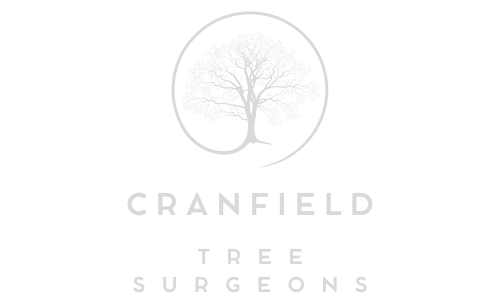Reducing Long-Term Risk by Removing Unsafe Trees
Trees are an essential part of the landscape, adding natural beauty, privacy, and environmental value to any property. However, when a tree becomes unstable, diseased, or damaged, it can quickly transform from an asset into a serious safety risk. Proactive tree removal is often the most effective way to prevent accidents, property damage, and costly repairs later on. At Cranfield Tree Surgeons, we specialise in assessing and removing unsafe trees across Cranfield, Bedfordshire, helping property owners protect their homes and surroundings through responsible tree management.
Understanding What Makes a Tree Unsafe
Not all unhealthy trees are immediately dangerous, but certain conditions significantly increase the likelihood of structural failure. Recognising the warning signs early allows for timely intervention.
Common Indicators of Unsafe Trees
- Visible decay or hollow sections: Cavities or rot at the trunk’s base or within branches often signal internal weakness.
- Splitting or cracking bark: Deep cracks may indicate that the tree is under structural stress.
- Dead or hanging branches: These are often the first parts to fall during storms or high winds.
- Leaning trunks: A sudden or severe lean can suggest root instability or partial failure underground.
- Root damage: Exposed, severed, or decaying roots reduce the tree’s ability to anchor itself securely.
- Fungal growth: The presence of mushrooms or conks on the trunk can point to internal decay.
Cranfield Tree Surgeons provides expert tree inspections to identify these and other warning signs, ensuring that hazardous trees are addressed before they pose a threat.
Why Unsafe Trees Pose a Serious Long-Term Risk
Leaving an unsafe tree in place may not cause immediate harm, but over time, the risk of collapse or damage increases dramatically. Trees can fail without warning, particularly during storms or heavy winds.
Property Damage
A falling tree or large branch can cause significant structural damage to roofs, vehicles, fences, and power lines. The clean-up and repair process can be extensive, especially when the problem could have been prevented with earlier action.
Safety Hazards
Unstable trees are a serious safety concern for homeowners, neighbours, and passers-by. Even a single branch falling from height can cause severe injury or obstruction.
Spread of Disease or Infestation
Diseased trees can infect nearby healthy trees if left untreated. Removing infected specimens prevents the spread of pathogens and pests, preserving the wider landscape’s health and appearance.
Liability Concerns
While not a legal focus here, it’s worth noting that maintaining safe trees is part of responsible property management. Neglecting an unsafe tree could lead to long-term complications that extend beyond the immediate environment.
The Benefits of Professional Tree Removal
While it can be difficult to part with mature trees, removal is sometimes the best decision for safety, sustainability, and the health of your outdoor space.
1. Prevents Unexpected Collapses
Professional removal ensures that unstable trees are taken down in a controlled and safe manner before they fail naturally. This significantly reduces the risk of accidents during storms or strong winds.
2. Protects Buildings and Structures
Removing a dangerous tree eliminates the chance of falling branches or root intrusion causing damage to roofs, walls, driveways, and underground utilities.
3. Preserves the Health of Remaining Trees
Taking out an unhealthy or decaying tree helps protect surrounding vegetation from disease spread and root competition. It also allows more sunlight and nutrients to reach healthier trees and plants.
4. Improves Aesthetic Appeal
Dead or leaning trees can detract from the appearance of a garden or property. Strategic removal restores balance and enhances the overall visual harmony of the landscape.
How Professional Tree Surgeons Manage Unsafe Tree Removal
Tree removal, especially in built-up areas, requires precision, skill, and experience. At Cranfield Tree Surgeons, we use a structured approach to ensure every removal is performed safely and efficiently.
Step 1: Initial Assessment
Every project begins with a comprehensive inspection to determine the tree’s condition, stability, and proximity to structures. We assess potential hazards and identify the safest method for removal.
Step 2: Controlled Sectional Dismantling
Where space is limited, trees are dismantled in sections using specialist equipment. This allows each part to be safely lowered without causing damage to surrounding property.
Step 3: Stump Removal or Grinding
After felling, the remaining stump can be ground down to prevent regrowth and improve the area’s usability. Stump grinding also eliminates tripping hazards and deters pests from nesting in decaying wood.
Step 4: Site Clearance
All debris is removed, leaving the site tidy and ready for replanting, landscaping, or construction if required.
When Should You Consider Tree Removal?
It’s not always easy for property owners to determine when a tree has reached the point of no return. However, certain conditions indicate that professional assessment and likely removal are necessary.
- The tree has large dead sections or limbs.
- It leans significantly or has shifted after a storm.
- Roots are exposed or undermining nearby structures.
- It’s suffering from advanced fungal decay or insect infestation.
- The trunk is hollow or severely split.
- It’s obstructing buildings, driveways, or power lines.
If any of these warning signs are visible, it’s time to call Cranfield Tree Surgeons for a professional evaluation.
Balancing Tree Preservation with Safety
While removal is sometimes unavoidable, our approach always prioritises preservation where possible. In some cases, selective pruning, bracing, or crown reduction can reduce risk while retaining the tree’s structure. However, when safety or long-term stability cannot be guaranteed, full removal remains the most responsible option.
The Long-Term Value of Preventative Tree Care
Removing unsafe trees doesn’t just solve an immediate problem — it’s a key part of proactive property management.
Preventative Benefits Include:
- Long-term reduction in maintenance costs.
- Better control of disease and pest issues.
- Enhanced safety and peace of mind.
- Improved light, space, and garden health.
Regular inspections from experienced tree surgeons, such as those at Cranfield Tree Surgeons, help ensure that potential hazards are detected early, allowing for preventative care rather than reactive measures.
Conclusion
Unsafe trees can compromise the safety, beauty, and value of your property if left unattended. Early identification and professional removal are the most effective ways to reduce long-term risk and maintain a safe environment.
Cranfield Tree Surgeons provides expert tree assessment, removal, and management services throughout Cranfield, Bedfordshire. Our skilled team combines knowledge, precision, and care to handle unsafe trees efficiently — protecting your property and ensuring your landscape remains healthy, stable, and secure for years to come.
Call us on: 01234 860 988
Click here to find out more about Cranfield Tree Surgeons
Click here to complete our contact form and see how we can help with your tree care needs.

